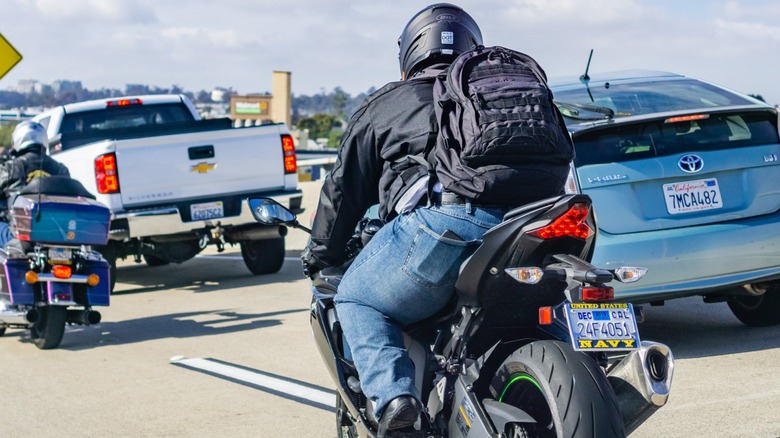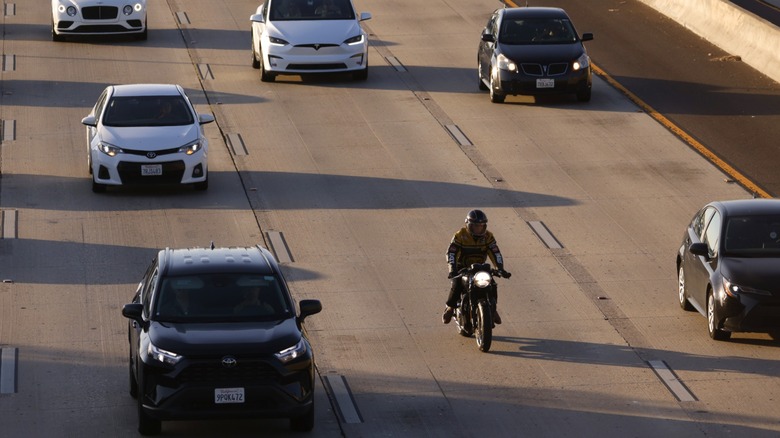What Riders Should Know About Minnesota's New Lane Splitting Rules
Motorcycle fatalities in Minnesota have been climbing. In 2022, a total of 1,035 motorcycle crashes occurred, killing 84 motorcyclists, which is the deadliest number ever recorded in the state. In 2023, 76 more lives were lost, most in crashes that could have been prevented. Even now, just a few months into 2025, the numbers continue to raise concern.
In response, lawmakers have begun introducing new policies aimed at making riding safer, starting with lane filtering and splitting. Back in 2019, California was the only U.S. state where lane splitting was legal. As of July 1, 2025, Minnesota has become the sixth state to legalize the practice, joining Utah, Montana, Arizona, and Colorado. Under the new law, riders can now legally pass vehicles in the same lane at speeds up to 25 mph, as long as they're going no more than 15 mph faster than surrounding traffic, and only on roads with two or more lanes moving in the same direction. They're also permitted to filter through stopped vehicles at intersections or in traffic jams—again, without exceeding the 15 mph difference.
This marks a big win for rider advocacy groups, who've long pushed for safer and more inclusive traffic laws. The change could ease congestion and help prevent rear-end crashes by letting riders avoid getting trapped in between cars. Meanwhile, motorcycle safety experts, including the Minnesota Department of Public Safety (DPS), are urging all road users, both bikers and drivers alike, to stay patient and alert as everyone adjusts to the new law.
What is lane splitting and how is it different from lane filtering?
Lane splitting is when a motorcycle zips between lanes of moving traffic, typically when cars are slowed down or crawling. Lane filtering, on the other hand, happens when other vehicles have come to a complete stop, say, at a red light. In that situation, a rider might slip between lanes to move toward the front of the queue. It's typically done at low speeds and is generally considered safer than splitting through moving traffic.
Now that lane splitting and filtering are officially legal in Minnesota, it's important to understand exactly when, where, and how you're allowed to do it. Your motorcycle must not exceed 25 mph under any circumstances. You also have to stay within 15 mph of the surrounding traffic's speed. So, if traffic is moving at 10 mph, your max is still 25 mph. But once surrounding traffic hits 20 mph, the 15 mph difference would put you at 35 mph, and that's too fast to count as lane splitting under the law.
Furthermore, lane splitting is only allowed on roads with two or more lanes moving in the same direction. That means no splitting on single-lane roads, highways with opposing traffic, or streets where lanes move in different directions. You're also not allowed to split at certain restricted locations: roundabouts, designated school zones, work zones where only one travel lane is open, or on freeway and expressway on-ramps regardless of whether there's a traffic signal in place. Now that you know how the law works, let's look at how it affects you.
What does this mean for riders and motorists?
With the new law now in effect, Jay Bock, the state's Motorcycle Safety Center Program Coordinator, is encouraging both riders and motorists to think of it as a form of "lane sharing." After all, the road belongs to everyone. So, there's a shared responsibility to use it safely and ensure that everyone gets to where they're going, however they can, safely.
As expected, public reaction to this has been mixed. Some worry that it's a weird motorcycle law that could lead to more crashes, especially if car drivers aren't aware or don't expect a bike beside them. Others fear the law could shift liability to drivers in the event of a collision, especially if the rider was within their legal rights. That concern has sparked anxiety around rising insurance premiums, with some predicting that car owners could see higher costs if insurers start assigning more fault to motorists. Then, there are those skeptical about whether motorcyclists would actually stick to the 25 mph limit when splitting lanes.
Still, regardless of how anyone feels about the law, the rules are the rules, and that goes for everyone. Drivers are not allowed to deliberately block a motorcycle that is lane splitting or filtering. On the other hand, the law expects motorcyclists to ride responsibly. So, always signal before moving between lanes. It generally helps if everyone knows some basic motorcycle hand signals. Avoid blind spots and be prepared to brake or swerve at a moment's notice because not everyone will see you coming. One last thing to keep in mind: Just because it's allowed doesn't mean you have to go for it. If it doesn't feel safe, don't do it.


